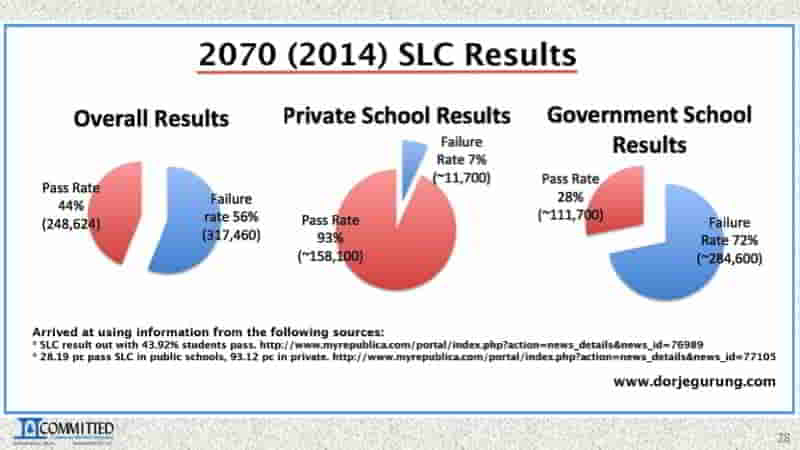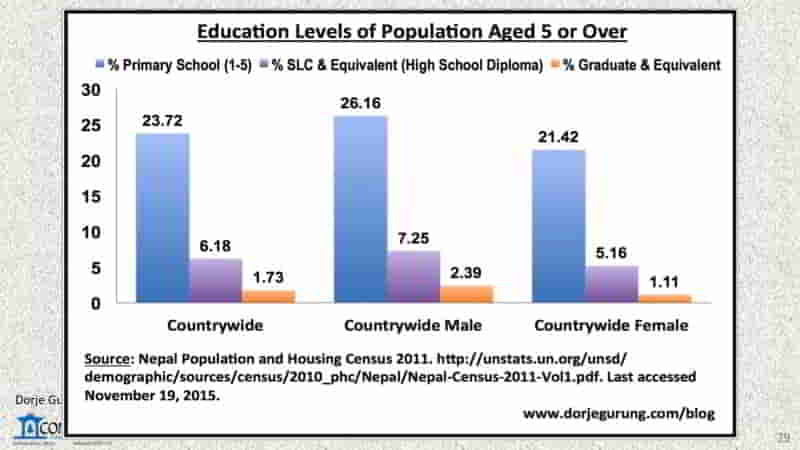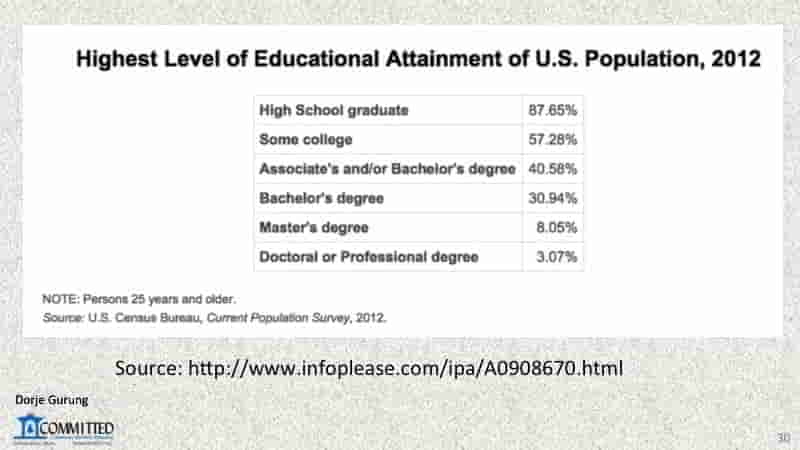QUALITY of public education is Nepal is very very poor. Those who suffer, as a consequence of that, are of course the poor and the marginalized.
The following clip from the Al Jazeera documentary School for a Dollar provides a glimpse into the flawed school systems in Terai, where some of the most marginalized—Dalits and Tharus–live.
[What I included in the presenteation starts at the 19:25 min mark as video below does but only parts of clip until the 22:30 min. appeared in the clip I showed.]
Private schools, as I am sure many of you know, are a different kettle of fish all together. Here’s a clip from the same documentary about a private school in Kathmandu that many of you might recognize or might have heard about.
[What I included in the presentation starts at the 15:11 min. mark as video below does but only parts of clip until the 16:42 min. mark appeared in the clip I showed.]
The difference in the quality of education between private and public schools is reflected, amongst other things, in the results of the School Leaving Certificate (SLC) examination.
As you can see, in 2014, more than twice as many students from public schools sat for the SLC. While private school results are good, public school results are abysmal. What’s most alarming is that a vast majority of public school students fail while it’s the opposite for private school students! I wouldn’t be surprised if there is as flagrant a difference in the GPA’s of students from the two kinds of school in the most recent SLC results.
Qualifications of the population, according to the 2011 census report are quite pitiful as well.
With the system of education in Nepal right now, especially in public schools, it is very challenging for MOST Nepalese children to get an education that is in any way practical, forget about an education that makes them life long learners, critical thinkers, problem solvers etc. etc. etc.
Just for comparison, here’s what the education level of the US population looks like.
To be sure, there is a lot of work to be done when it comes to the emancipation of marginalized Nepalese. Policy and advocacy work on the education system of the country and the plight of semi- and unskilled migrant Nepalese for instance being only two of them.
The other being fixing what was destroyed by the earthquakes, which has set the country back considerably.
16,000 public and private schools – roughly half of all schools in the country — are estimated to have been damaged by the earthquake affecting almost a million students. 5000 completely destroyed.
Depending on the sources, the education of a million to 2.5 million students in the hills have been affected by the earthquakes. The education of a further 1.5 million students elsewhere were affected by the protests and blockade.
But even after more than a year, as I mentioned earlier, reconstruction has not really begun in earnest.




